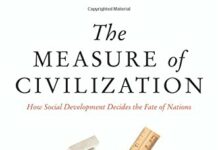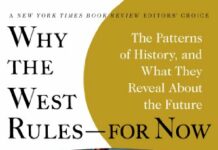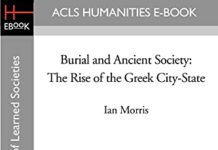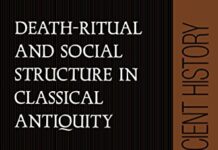
Ebook Info
- Published: 2009
- Number of pages: 399 pages
- Format: PDF
- File Size: 3.10 MB
- Authors: Ian Morris
Description
The world’s first known empires took shape in Mesopotamia between the eastern shores of the Mediterranean Sea and the Persian Gulf, beginning around 2350 BCE. The next 2,500 years witnessed sustained imperial growth, bringing a growing share of humanity under the control of ever-fewer states. Two thousand years ago, just four major powers–the Roman, Parthian, Kushan, and Han empires–ruled perhaps two-thirds of the earth’s entire population. Yet despite empires’ prominence in the early history of civilization, there have been surprisingly few attempts to study the dynamics of ancient empires in the western Old World comparatively. Such grand comparisons were popular in the eighteenth century, but scholars then had only Greek and Latin literature and the Hebrew Bible as evidence, and necessarily framed the problem in different, more limited, terms. Near Eastern texts, and knowledge of their languages, only appeared in large amounts in the later nineteenth century. Neither Karl Marx nor Max Weber could make much use of this material, and not until the 1920s were there enough archaeological data to make syntheses of early European and west Asian history possible. But one consequence of the increase in empirical knowledge was that twentieth-century scholars generally defined the disciplinary and geographical boundaries of their specialties more narrowly than their Enlightenment predecessors had done, shying away from large questions and cross-cultural comparisons. As a result, Greek and Roman empires have largely been studied in isolation from those of the Near East. This volume is designed to address these deficits and encourage dialogue across disciplinary boundaries by examining the fundamental features of the successive and partly overlapping imperial states that dominated much of the Near East and the Mediterranean in the first millennia BCE and CE.A substantial introductory discussion of recent thought on the mechanisms of imperial state formation prefaces the five newly commissioned case studies of the Neo-Assyrian, Achaemenid Persian, Athenian, Roman, and Byzantine empires. A final chapter draws on the findings of evolutionary psychology to improve our understanding of ultimate causation in imperial predation and exploitation in a wide range of historical systems from all over the globe. Contributors include John Haldon, Jack Goldstone, Peter Bedford, Josef Wiesehöfer, Ian Morris, Walter Scheidel, and Keith Hopkins, whose essay on Roman political economy was completed just before his death in 2004.
User’s Reviews
Reviews from Amazon users which were colected at the time this book was published on the website:
⭐This is the missing link for those interested in the great empires of the past. Most often empires are examined as an isolated timeline of historical events led along by famous men. This collection of essay seeks to delineate the factors that lead to and maintain the great powers of the past. There are a variety of approaches to state formation here from political economy to social imperatives.
⭐A good scholarly review of the dynamics of empire building which presents some current theories held by historians. I would have liked to see more debate between different theoretical perspectives, but otherwise a good read.
⭐This is a useful collection of essays on ancient empires of the Near East and Classical world. Empires discussed include the Neo-Assyrian, first Persian, Athenian, Roman, and Byzantine empires. As pointed out by the authors of the essays on the Athenian and Byzantine states, these polities were not, strictly speaking, empires but rather different kinds of states. Given the diversity of the polities discussed, its probably better to regard this collection as discussing a variety of ancient states, not just empires. These essays are bookended by a discussion of the concepts of empire and state formation by Goldstone and Haldon, and a final essay that attempts a Darwinian perspective on ancient empires. All essays are well written and interesting. The essays on Neo-Assyrian, Persian, and Byzantine empires are largely solid overviews of the nature and histories of these states. Ian Morris’ essay on the Athenian state is a particularly interesting discussion of state formation in Classical Greece. Keith Hopkins’ essay on the Roman Empire focuses on political economy and is also analytically strong. The opening, and more theoretical, essay on the nature of empires is thoughtful and given the present strong interest in empires, very useful because is provides some analytic clarity lacking in a lot of historical discussions of empire. The final essay by Walter Scheidel on the role of male reproductive fitness as a driving social force is well written and argued but will strike anyone with a background in biology as pretty obvious. Nice bibliography.
⭐An excerpt from the reivew at StrategyPage.Com:After an introductory essay, there follow papers on the Neo-Assyrian, Achaemenid Persian, Athenian, Roman, and Byzantine empires (this last with a brief look at early Islamic empires). Naturally, given the varied characters, size, and durations of the various empires, the several authors each tend to have a somewhat different focus in their treatments. The over-all result, however, is a comparative look at how and why these empires were formed, their organizational and ideological differences and similarities, their economies, and more. The work concludes with a thought-provoking essay by editor Scheidel on “Sex and Empire”, that considers empire building an extension of human reproductive competition, perhaps overly simplistic, given that at least one of his empires, the Roman, had a long history of welcoming new blood.
⭐I am no expert in this field but I bought the book to back up a U3A course I have been teaching. The book is a series of essays by different authors. The first chapter asks what is an empire. Then follow studies of five empires: Neo-Assyrian, Achaemenid, the Greater Athenian State (not a true empire), Rome and Byzantium. The chapter on the Byzantine Empire unexpectedly ran on into a detailed discussion of the Islamic states that followed Byzantium. Lastly there was a chapter discussing the idea that ultimately the purpose of an empire was to enable an elite to command the reproductive potential of women in bulk.The first four empires were easy to understand and offered stimulating insights into how these empires were organised at a fundamental level. The study of Byzantium was more difficult to follow because it was written in a compact style using many technical terms (which were a shorthand for complex ideas) and so was difficult for a greenhorn to grasp.Nevertheless I picked up some valuable insights. I recommend this book for those who want to dig deeper than the usual narrative accounts of ancient history.
⭐Very interesting.
Keywords
Free Download The Dynamics of Ancient Empires: State Power from Assyria to Byzantium (Oxford Studies in Early Empires) 1st Edition in PDF format
The Dynamics of Ancient Empires: State Power from Assyria to Byzantium (Oxford Studies in Early Empires) 1st Edition PDF Free Download
Download The Dynamics of Ancient Empires: State Power from Assyria to Byzantium (Oxford Studies in Early Empires) 1st Edition 2009 PDF Free
The Dynamics of Ancient Empires: State Power from Assyria to Byzantium (Oxford Studies in Early Empires) 1st Edition 2009 PDF Free Download
Download The Dynamics of Ancient Empires: State Power from Assyria to Byzantium (Oxford Studies in Early Empires) 1st Edition PDF
Free Download Ebook The Dynamics of Ancient Empires: State Power from Assyria to Byzantium (Oxford Studies in Early Empires) 1st Edition




